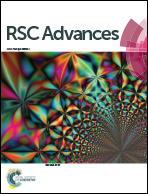A first-principles study on the defective properties of MAX phase Cr2AlC: the magnetic ordering and strong correlation effect†
Abstract
Our first-principles calculations indicate the defective properties of Cr2AlC are very different from the commonly studied Ti-based MAX phases. Al vacancies are predicted to have high formation energies while Cr vacancies have low formation energies in Cr2AlC. Compared with previously reported results of MAX phases, the formation energy of the anion antisite defect pair in Cr2AlC is the lowest (∼1.9 eV), predicting a good irradiation-resistance property. The reduction in the formation energy of the Cr–Al antisite defect is attributed to the magnetic ordering and strong correlation effect of Cr atoms. Analysis suggests that the majority spin state of the dz2 orbital of Cr is lowered in energy while the minority spin states become empty, which makes the Cr more ionic in character.


 Please wait while we load your content...
Please wait while we load your content...